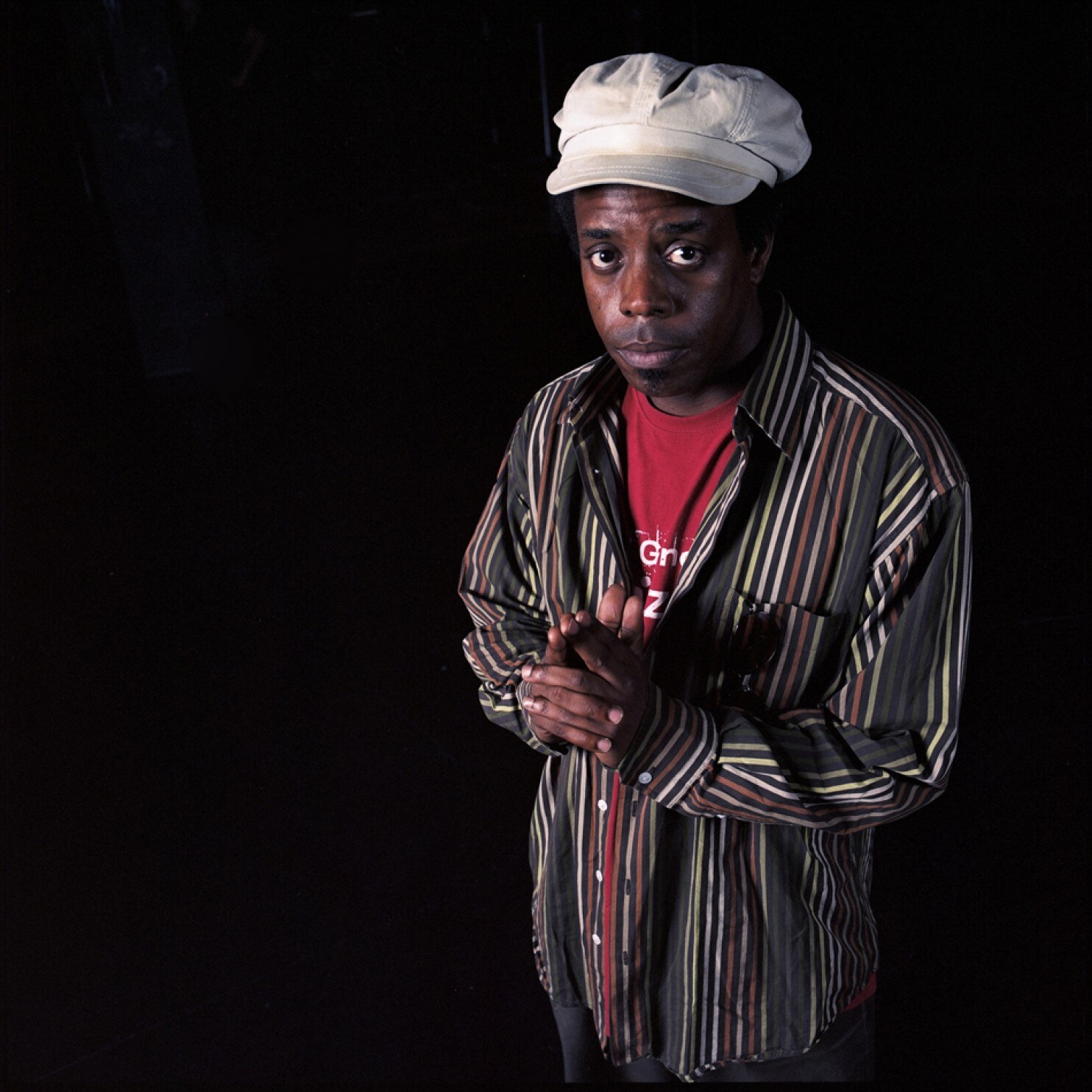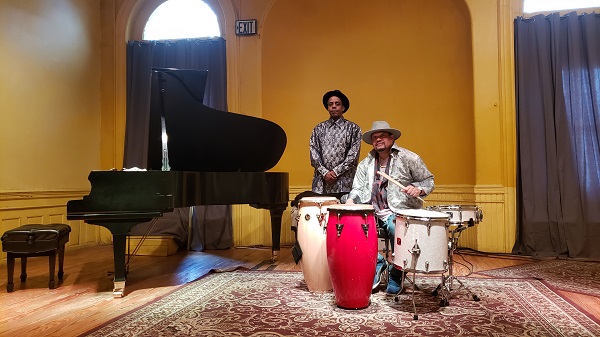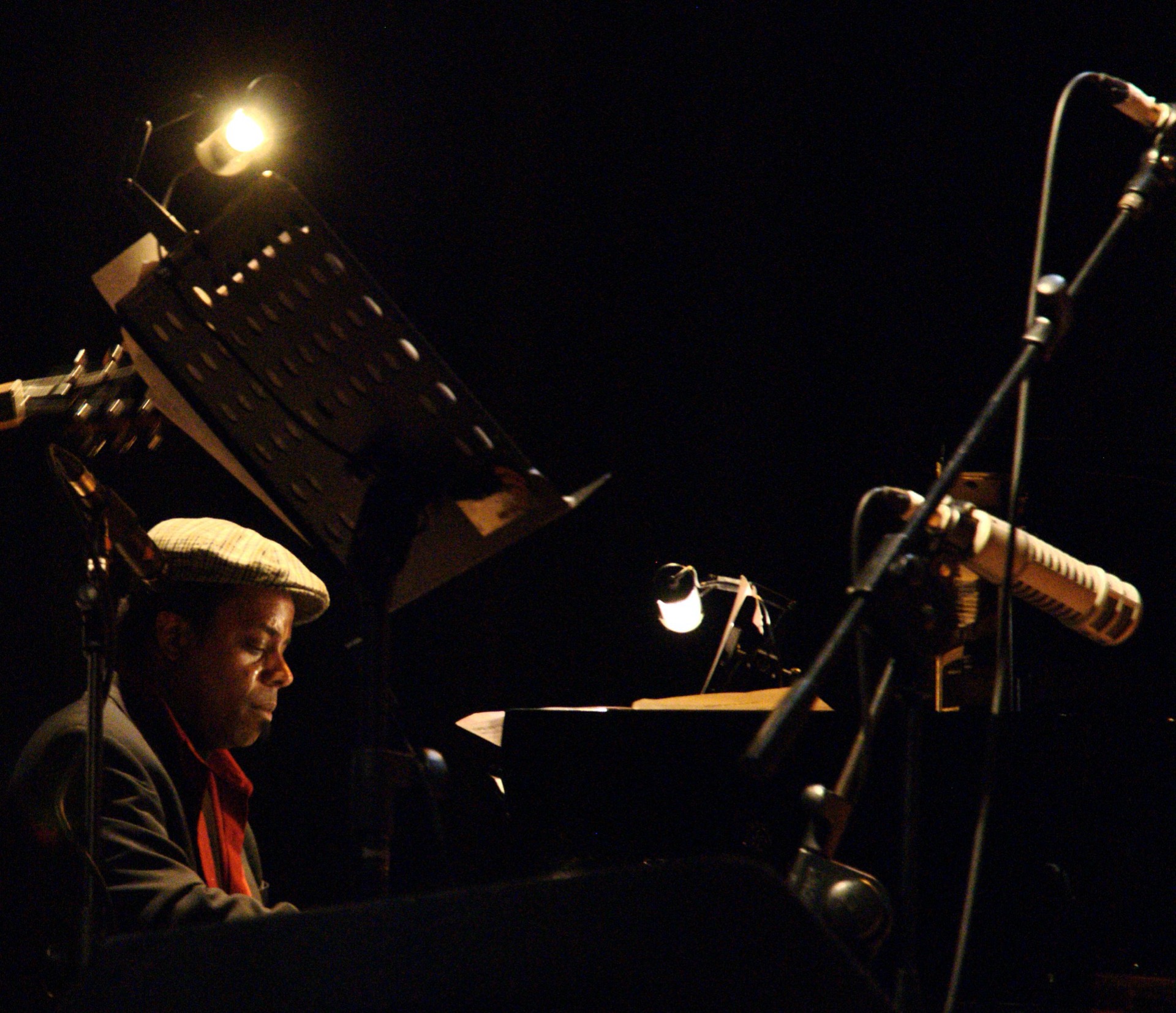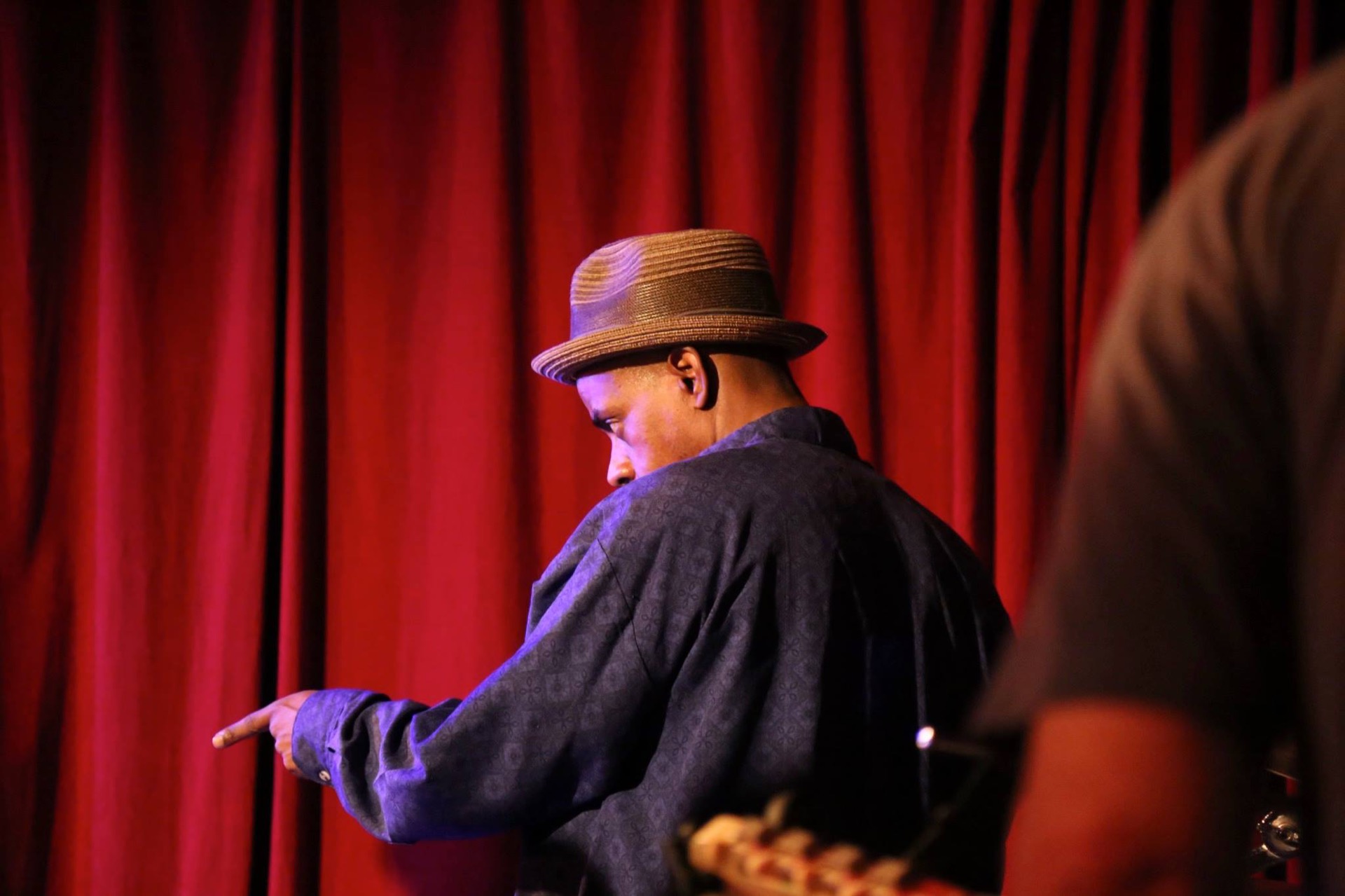Lafayette Gilchrist
I've been embarrassingly out of the loop on pianist/composer Lafayette Gilchrist, and since he's currently a resident of Baltimore (just up the road from me, here in DMV) I felt I should catch up. You may already know him from his tune "Assume the Position" (2004):

Used in "The Wire", it is a great intro to his sound. Gilchrist's sound is 'human': acoustic instruments, the recordings sound unprocessed, in a good way - no quantizing or overdubbing. It's very appealing to me - like a person standing in front of you, not playing for the camera, or expecting special FX to help out in post-production. As listeners, we get to know Gilchrist for who he really is.
You can hear Ellington and Monk in his use of dissonance in the lower register of the piano and his use of stride elements. He often uses a pattern - perhaps an altered boogie-woogie - in the left hand, adding lines with his right hand that sometimes stray beyond the edges, and then somehow find their way back. He is not afraid to use some traditional sounds - harmonies may come from the church, from the blues, or from early 20th century European music as filtered through the jazz tradition.
In this review, I'll dig into a solo piano recording and a live stream. So without further ado, let's dig in...
First up, "Blues for Our Marches to End" (2019) from 2019 album, Dark Matter:
This piece, with its evocative title, opens with a boogie-woogie style figure on E flat7 in the left hand, with right hand weaving and floating, leaving us a little unsure as to where we are or where we might be going. Based on the title, we may expect it to turn into 12 bar blues. A melody peeks thru, and 9 bars in we move to the Ab - but are we in a blues form? Tossing out any notion of the traditional blues, we go to a couple of surprising harmonies and find we're into a harmonic cycle that references blues, but sounds more like 24 bars - a stretched-out blues that also gives respect to older gospel traditions. Gilchrist explores the cycle, touring a musical world that includes a lot of jazz history. One example is his sophisticated pattern at 4:29 that fits seamlessly into the more traditional playing that follows. Like many of Lafayette's tunes, there is an unresolved ending - wonderful!
"Since its very origins, jazz has been all about absorbing popular dance musics and then adding both flexibility and improvised variations to the rhythm, harmony, and melody. Whether it was ragtime, swing, Cuban music, Brazilian music, soul, or funk, the alchemy was the same. Gilchrist, who grew up in Washington, D.C. during the golden era of Chuck Brown's go-go, has succeeded in transforming that music in much the same way Dizzy Gillespie transformed Afro-Cuban music." - Geoffrey Himes on Gilchrist, Baltimore Sun, 11/4/2014
Next up, "Quarantine Concert Series #48: Lafayette Gilchrist & Kevin Pinder" 6/29 (Watch Here):

I hadn't attended any of the live streams from Andie Musik, so when I saw 'Percussion Discussion', I figured this was a good opportunity. As you can guess, the presentation was very straightforward, no frills. Everything took place on the Andie stage.
As it begins, we see the grand piano on the left. On the right, congas, a drum kit, and assorted percussion instruments. There was a bit of upfront discussion explaining the history of the collaboration between Gilchist & Pinder. Toward the end, Lafayette explains the concept of this concert: "When you think about melody construction - it's a function of rhythm - all melodies have rhythm - rhythm is an interactive thing..."
The set starts about 12 minutes into the video with Pinder's congas and rainmaker. It's an afro-cuban reference, though not in the strictest sense (no montuno from the piano for example.) At times, Pinder states the clave rhythm with both hands on congas. Gilchrist meanwhile, hovering in Eb minor, moving through I - IV - V chords.
As we get into the set, it's clearly a duo improvisation - loose, though there are touchpoints. The first few minutes seem a little tentative, but by the 16min mark, they are locked in. It's easy to see how this is truly a 'discussion' - Pinder's percussion plays more than a background role.
At about ~19m Lafayette shifts to a stride pattern - it makes you wonder what music might have been happening in New Orleans that was never captured in recording - the fusion of African drumming with the Ragtime style - but not the sanitized ragtime we have typically heard!
The discussion continues with Pinder moving from congas to kit. At times Pinder and Gilchrist state a rhythm in unison, clearly reaching agreement in this discussion. Later we move into Monkish harmonic territory and then tunes from the Stevie Wonder book: 'Another Star' and 'As'.
The set would have been helped by a bit more structure - at times you feel like you're sitting in a room listening to a discussion with two old friends: it's interesting, but if they had come up with some topics, or a little more structure, it would have given you greater insight into each musician's thinking.
You don't have to be a resident of Baltimore or even the east coast - if you've only heard his signature "Assume the Position", find the opportunity to get deeper into Lafayette Gilchrist's sound.

